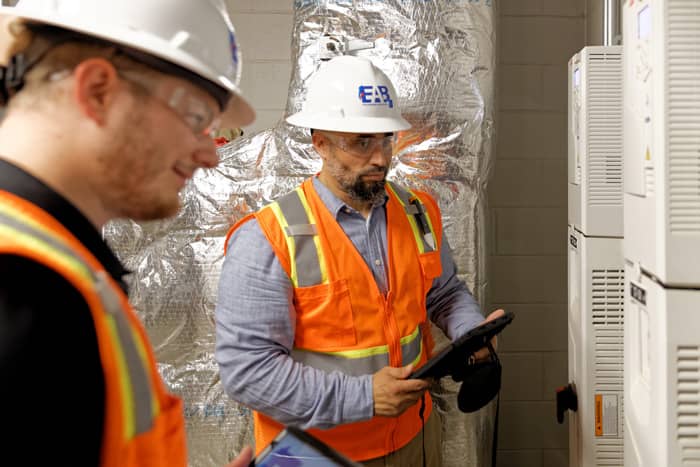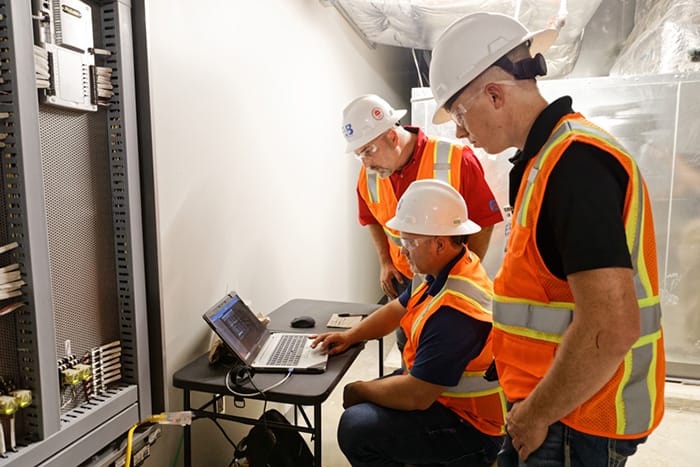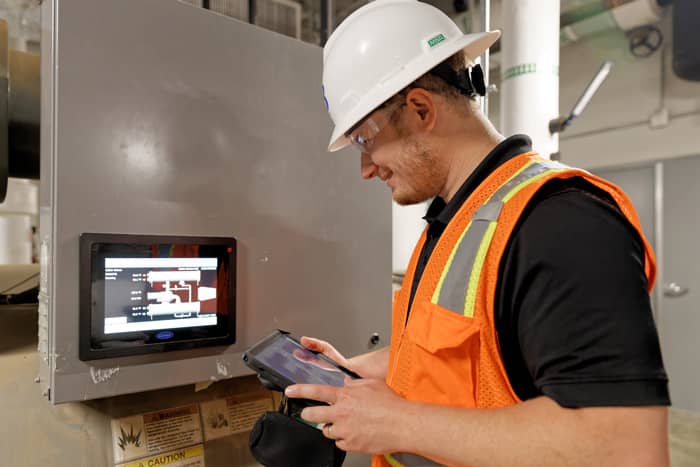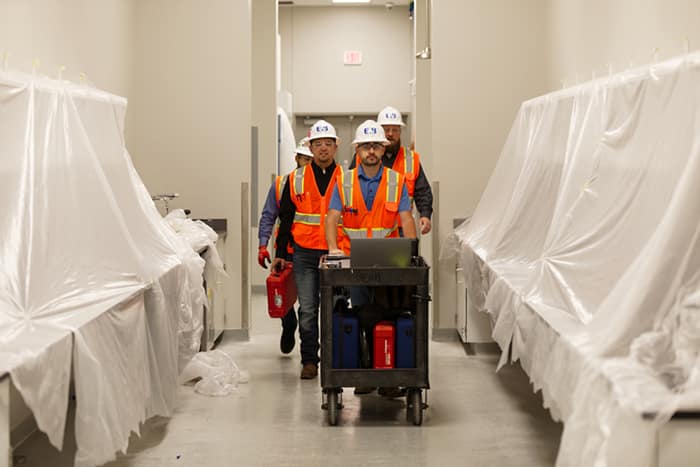
Commissioning of existing buildings (EBCx) is commonly categorized into two types: Retro-Commissioning and Recommissioning. Retro-Commissioning involves commissioning a building that has already been constructed and occupied but was not commissioned at the time of its original construction. Recommissioning, on the other hand, applies to buildings that were previously commissioned but now require further commissioning due to various factors such as changes in occupancy or usage, aging infrastructure, updates in local regulations, enhancements in indoor air quality, or the need for improved energy efficiency.
At Engineered Air Balance (EAB), we specialize in commissioning services for both new and remodeled commercial constructions. Occasionally, our services extend to existing buildings, driven by the need to assess and update the facility’s operational status to align with the Current Facility Requirements (CFR).
The Importance of EBCx
Over time, building systems can degrade or become obsolete. Changes in building use or occupancy can further exacerbate the need for updated commissioning services. Recognizing this need, facility owners or relevant authorities will determine the necessity for EBCx, assemble the CFR, delineate the EBCx scope, and select a proficient commissioning provider (CxP). According to ASHRAE standards, the commissioning process involves the CxP team Assessing documentation, Investigating the facility through direct observations and tests, Implementing necessary modifications, and finally, Handing off critical data to the building owner.
Assessment Phase

In this initial phase, the CxP team collects and organizes data from the building owner, forming an EBCx Plan that includes benchmarks for the upcoming Investigation phase. This plan becomes a comprehensive guide, encompassing project details, communication protocols, team roles, activity schedules, and an orientation program for the final Hand-off.
Investigation Phase

The goal during this phase is to assess how well the existing systems meet the CFR. The CxP team conducts thorough evaluations and tests to determine the efficacy of the current setups as outlined in the EBCx Plan. Support from the owner’s team is crucial here, facilitating minor adjustments and repairs that often include cost-effective solutions like sensor recalibrations or basic system modifications.
The findings and actions are detailed in an investigation report, which lists all adjustments made, identifies deficiencies, and prioritizes recommendations for system repairs and upgrades. This report aids the building owner in resource allocation for achieving the CFR during the Implementation phase.
Implementation Phase
This phase is a direct continuation of the Investigation Phase. While the Investigation Phase addresses minor, cost-effective repairs, the Implementation Phase tackles more substantial, capital-intensive repairs and upgrades. Using the detailed investigation report finalized at the end of the previous phase, the building owner organizes and prioritizes the necessary actions that need to be addressed. This phase is distinct due to the extensive nature of the changes it encompasses, which include the time-intensive processes of obtaining approvals, conducting research, scheduling, and actual construction.
The Implementation Phase is markedly different from the Investigation Phase in that it usually proceeds without the continuous presence of the CxP team on site. This separation is necessary to manage the larger scope of work and the detailed coordination required. After all scheduled enhancements are completed, the CxP team returns to conduct a thorough reevaluation of all systems impacted by the Implementation Phase to ensure that all modifications meet the defined criteria and function as intended. This comprehensive evaluation marks the transition to the final Hand-off phase, preparing all systems and documentation for transfer to the owner’s operations team.
Hand-off Phase
The Hand-off phase marks the conclusion of the commissioning process, during which the CxP team transfers all critical information gathered across previous phases to the building owner’s operations and maintenance (O&M) team. This transfer primarily involves the Systems Manual, a comprehensive document that records the final operational state of the facility as influenced by the EBCx activities. The manual details essential elements such as all setpoints, operational sequences, benchmarking procedures, and key lessons learned throughout the commissioning process.
The Systems Manual is instrumental in guiding the training of the O&M staff on the systems that have been affected by the EBCx activities. Training typically occurs after all commissioning verification activities are complete, ensuring that the O&M team is fully equipped to manage and maintain the enhanced systems effectively. Further, the training includes instructions on how to continually update the Systems Manual, enabling it to serve as an evolving resource that supports ongoing facility management and adapts to future changes and requirements. This ensures that the Systems Manual remains a vital, living document within the facility’s operational framework.
EAB’s Retro-commissioning and Recommissioning services offer a full spectrum of services tailored to adapt existing facilities to new building standards, enhance energy efficiency, and optimize operational costs. Through meticulous execution of the Assessment, Investigation, Implementation, and Hand-off phases, we guarantee that your facility operates at its best and complies with current and future standards. Our approach ensures that every aspect of your building’s performance is maximized, unlocking its hidden potential and ensuring sustained, optimal operation.



